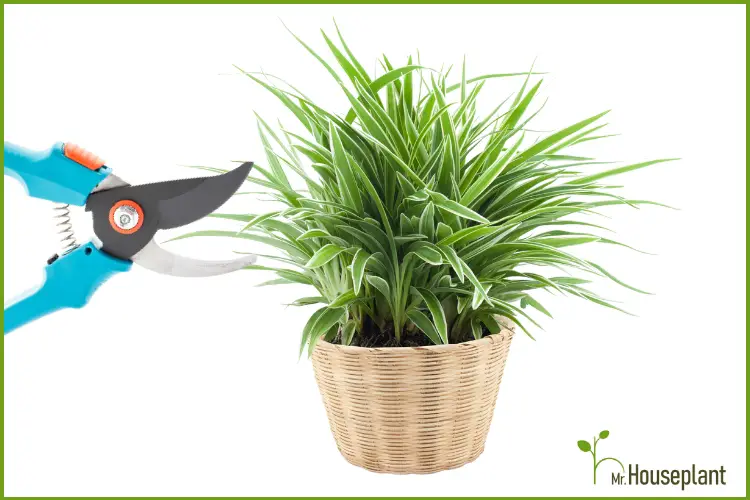
Unsure if trimming a Spider Plant is what you need to do? Perhaps you don’t know when, where, and how to prune Spider plants. After reading this blog post, you will be an expert in Spider Plant pruning.
Spider plants can be trimmed at any time, but it’s best to do so when they are actively growing. Trimming promotes new growth, removes damaged or diseased foliage, controls size and shape, and can be used for propagation. To prune, use sharp, clean pruning shears, disinfect them before and after use. Trimming of roots is suggested for overgrown or overwatered plants.
When To Trim A Spider Plant?
You can trim a Spider plant any time of year, but it’s best to do so when they are actively growing. If the plant is overgrown or has brown leaves or brown leaf tips, or when it’s diseases, it’s time to trim it back to keep it healthy and looking its best. You can also trim when you want to propagate.
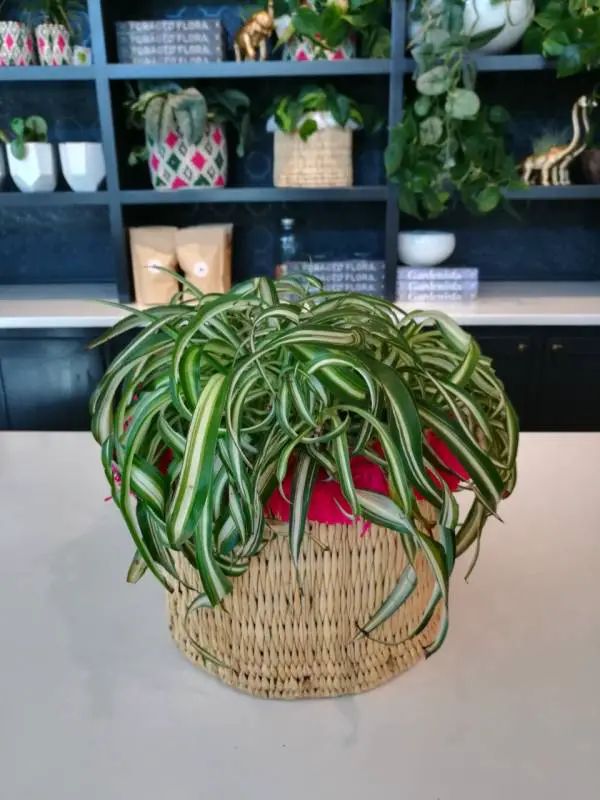
Spider Plant
What Are The Benefits of Spider Plant Trimming?
Spider plant trimming has several benefits. Pruning Spider Plant can help promote new growth, which will make the plant look fuller and healthier. It also removes any damaged, dead or diseased foliage, which can improve the overall plant health. Additionally, by trimming back the plant, you can control its size and shape, which is important if you want to keep it from getting too large. Lastly, trimming can encourage the plant to produce more offshoots or baby plants, which can be propagated to create new spider plants.
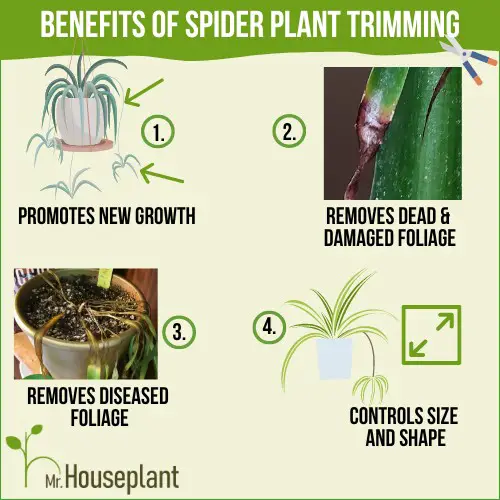
Spider Plant trimming benefits: 1) promotes new growth 2) removes dead & damaged foliage 3) removes diseased foliage 4) controls size and shape
Pruning Tools: What to Use and How?
Pruning a spider plant is a simple task that requires only a pair of sharp, clean scissors or pruning shears. Use a sharp blade so you can make a clean cut and avoid squishing the leaves. Clean the blades with rubbing alcohol or another disinfectant before and after use to prevent the spread of disease and reduce the chances of leaf infection.
How to Prune a Spider Plant
Trimming to Maintain a Healthy Beautiful Chlorophytum Comosum
Regular trimming of your Chlorophytum Comosum is very important to keep it beautiful and healthy. If your plant has dead, brown, dry leaves, prune them at the leaf base, close to the rest of the plant. Things like chlorine in tap water, low humidity, or too much fertilizer may cause brown leaf tips on the leaves. Use sharp tools (pruning shears) to cut off the brown tips.
Trimming an Overgrown Chlorophytum Comosum
If your Chlorophytum Comosum is overgrown, you can prune it to reduce its size. If there are plant babies hanging from long flower stems, you can cut off the flower stems at the base of the plant. If there are multiple Spider plants in the pot, you can cut off some of them, by pruning them off at their base. This will remove a lot of healthy growth that is photosynthesizing and producing sugars for the plant, but as long as there is sufficient healthy growth left, that’s fine.
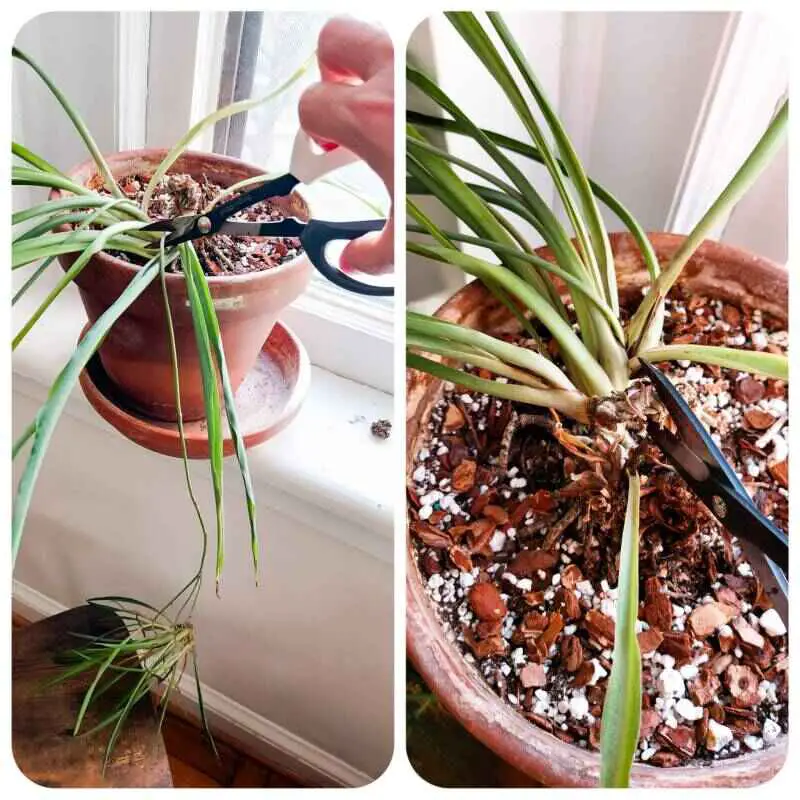
Trim your Chlorophytum Comosum if it's overgrown
Trimming for Propagation of Baby Plants
If you take good care of your Chlorophytums as it matures you will see small baby plants (spiderettes) growing on your Spider plants. Babies will hang from long flower stems. You can trim the end of a flower stem where the last baby is, half an inch from the baby. Put the cutting in water, in a warm spot with bright indirect light, and let it grow roots. Or plant it directly in the soil, water thoroughly, and put it in a warm bright spot. The spot can have some direct sunlight.
If you want more than one baby, go up the flower stem and use the same process for the next plantlet.
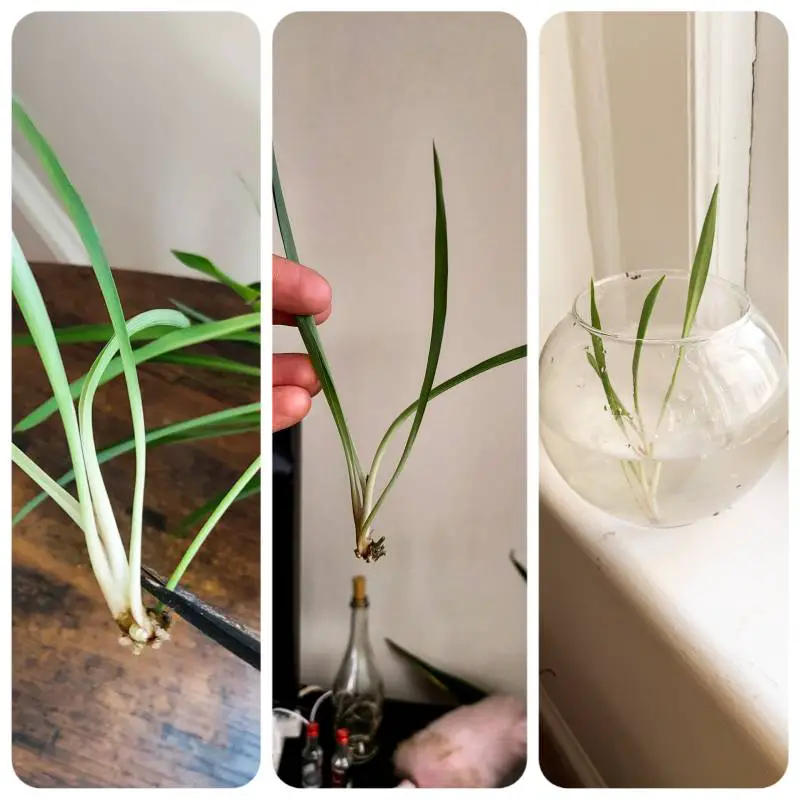
Baby Spider Plant cutting placed in water after pruning
How to Trim Spider Plant Roots
If you have a plant that needs repotting because its rootbound, you can trim its roots in order to keep it in the same pot. To cut an overgrown plant’s roots, first, untangle the roots. Then use clean, sterile pruning shears to trim a few inches of thin long roots. Don’t cut off the thick tubers, if you don’t have to, as they store most of the sugar reserves. Keep in mind that trimming roots will stress out your plant and it can take a while for the plant to recover, regrow new roots, and continue growing new leaves.
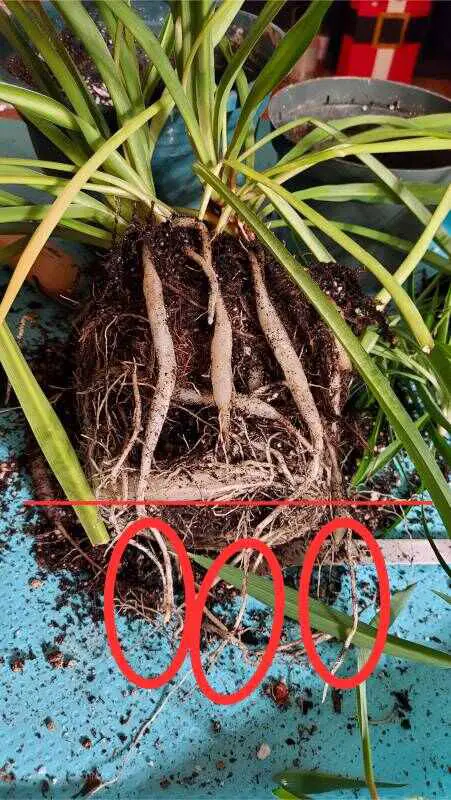
Trim a few inches of thin long roots below the red line
If you have an overwatered plant, you will notice soft, mushy, smelly, or brown roots. Use a pair of clean sterilized pruning shears to cut off all of the soft and mushy roots until you reach healthy roots. You can cut off thick tubers as well if they are soft and mushy. Repot the plant to fresh soil. To avoid overwatering in the future, reduce the frequency of watering and provide the plant with more bright indirect light and direct sunlight.
FAQ
Will Cut Leaves Grow Back?
No, cut leaves will not grow back. However, if your plants are getting good care they will grow new leaves.
Should I Cut Bent Plant Leaves?
No, you should not cut bent Spider Plant leaves if they are still green. Green leaves still photosynthesize and produce sugars for the plant. If the bent leaves have turned brown, they are already dead and you should cut them off.
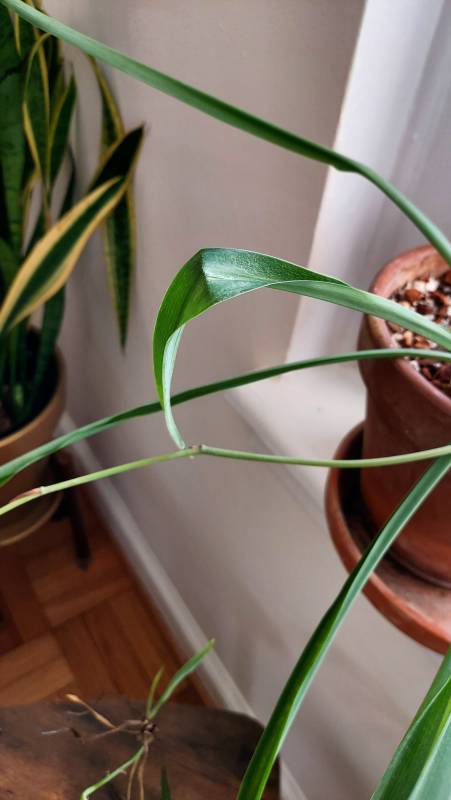
Green and healthy Spider Plant leaf shouldn't be cut
Can I Cut The Brown Tips Off My Chlorophytum Comosum?
Yes, you can cut the brown tips off your Chlorophytum Comosum. Brown tips are a common issue with spider plants, and brown tips can occur for a variety of reasons such as overwatering, underwatering, fluoride content in water, fertilizer and salt build-up, low humidity, too much sun exposure, or diseases. Trimming brown tips is a simple way to improve the plant’s appearance. When cutting off the brown tips, be sure to use clean, sharp scissors or pruning shears and sterilize them before use. It’s also a good idea to address the underlying cause of the brown tips to prevent them from reoccurring in the future.
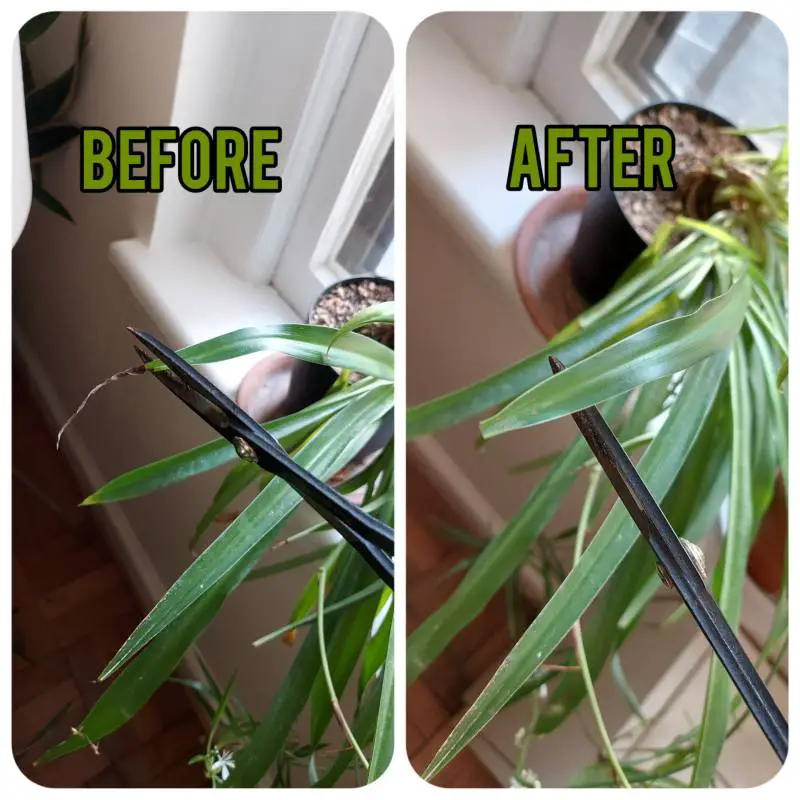
Pruning brown leaf tips from Spider Plants
Conclusion
To conclude, Spider Plants can be pruned whenever it’s required. However, for the maximum benefits it’s recommended to trim it during the plant’s active growth. It will encourage new growth, eliminate unhealthy leaves, maintain the shape and size of the plant, and allows you to propagate it. Use clean, sharp pruning shears or scissors to trim your Spider Plant, and don’t forget to sterilize them to prevent some infection. In case there is an overwatered or overgrown plant, you should trim the roots.
Yours Truly,


Related Posts
Fiddle Leaf Fig Problems (And HOW TO Treat Them)
Anthurium Vittarifolium Vs Pallidiflorum (4 easy TIPS!)
How Often Should I Water My Spider Plant: The Ultimate Guide